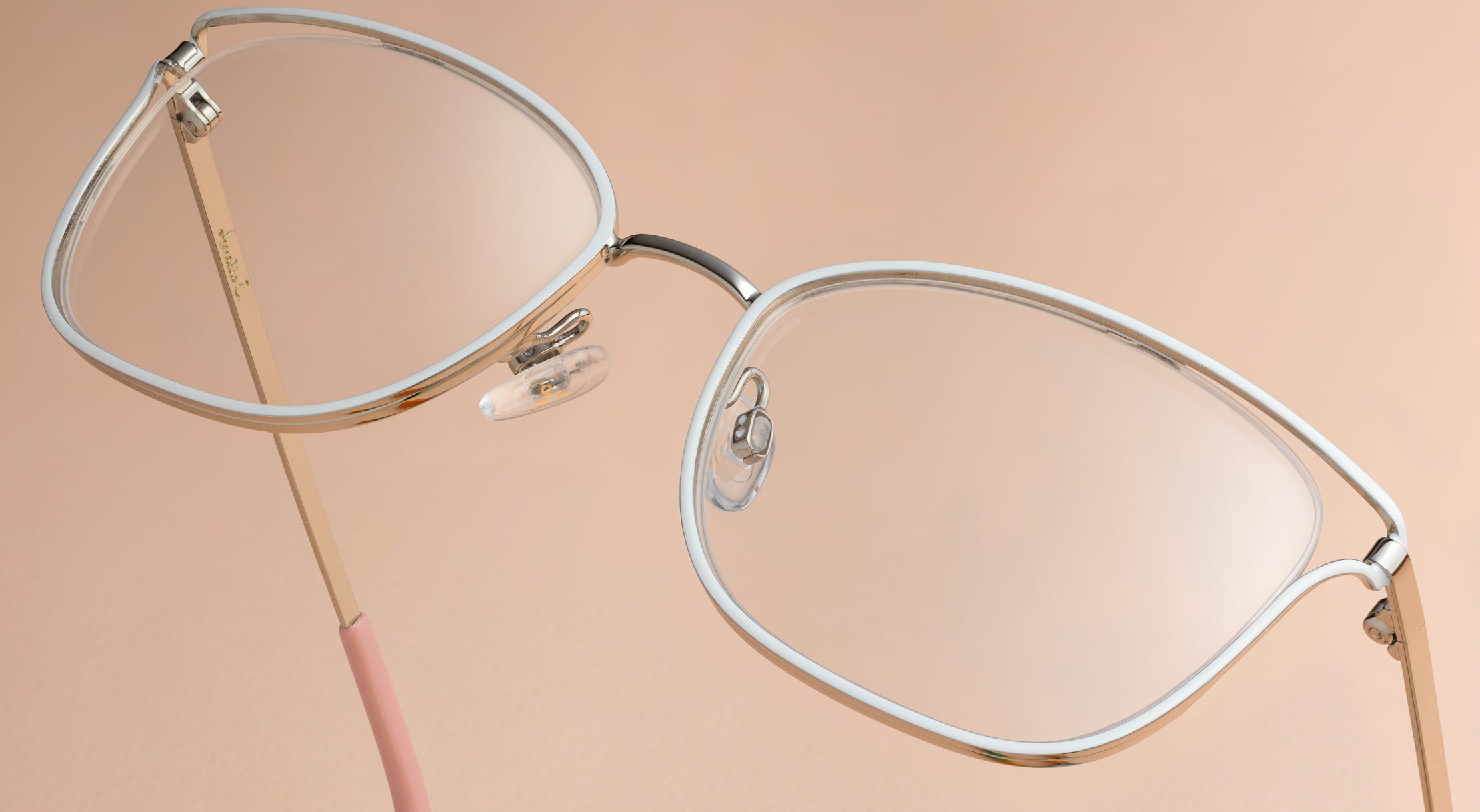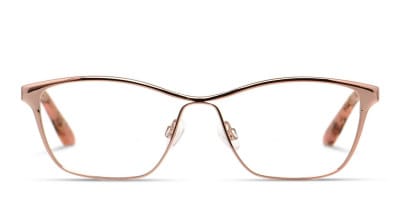What are progressive lenses?
Updated MAY 16, 2023 • 6 min read

Summary in 30 seconds or less:
In this article we take a deep dive into progressive lenses and multifocals in general: What are they, who needs them, and how to get your eyes adjusted to progressive lenses.
Most people notice when entering their forties that it becomes increasingly more difficult to change focus from seeing across the room, and to then re-focus on desk work.
At birth, the lens inside of the eye is able to change focus easily. As people grow older, the lens inside of the eye becomes less and less flexible, and the ability to change focus diminishes. Instead of the lens inside of the eye changing shape to adjust the focus, prescription lenses are used to adjust the focus.
Jump to content
- What is a progressive lens?
- Lens design for special purpose
- The adaptation process
- How to use your glasses with progressive lenses
What is a progressive lens?
Progressive lenses are a specially designed type of multifocal lens. They are sometimes known as PALs, “Progressive Addition Lenses.” They may also be referred to as no-line bifocals.
Although there are no lines visible in a PAL, there are three basic areas meant to be used for clear vision at different distances.
- The top half of the lens is for seeing across the street or a road sign.
- The bottom portion of the lens is for reading and seeing details up close.
- In between these two sections is a transition zone used for seeing objects at an intermediate range.
The power in this transition area of the lens gradually increases until it merges with the reading area. The graduation of power allows for clear vision at many distances: near, far and in between.
There are many brands of progressive lenses, each with their own signature design but all use this same general concept. Furthermore at GlassesUSA.com, you can purchase a multitude of options of progressive glasses online.
Lenses designed for special purposes.
Prescriptions can be written for special uses like computer/desk work, or for general purpose glasses to be used throughout the day. The same is true for a progressive lens design. There are PALs designed specifically to meet the visual needs of office workers, outdoor enthusiasts and general everyday vision.
For computer and desk work, the progressive lens is designed for near and intermediate range of vision. The transition zone between intermediate and near vision is wider for greater area of clear, comfortable vision. While desk work and the computer will be clear, distance vision will be blurry. Think of computer PALs as reading glasses. A second pair of glasses will be needed for everyday use.
Computer progressive lenses may also be useful for other types of jobs or avocations such as dentists, artists, musicians, electricians, mechanics, plumbers, and hairdressers.
For the outdoor enthusiast, a ground-view progressive lens has four zones. In addition to the near, intermediate and distance zones of a typical PAL, there is a zone at the very bottom edge of the lens to see the ground clearly. The idea behind this design is to be more sure footed while hiking or to see steps more clearly.

Standard, short-corridor and premium digital.
Progressive lenses are available as a standard PAL, short-corridor PAL and premium digital PAL.
A standard PAL provides clear, comfortable vision but requires the vertical height of the glasses frame to be tall enough. If the vertical height is too short the reading portion of the PAL will be cut off.
For smaller glasses with a shorter vertical height, a short-corridor PAL may be used.
A premium digital PAL is a computer engineered lens with a custom design. The lens design takes into account facial features, eye dominance, glasses shape and prescription requirements for optimal clarity and comfort.

Getting used to progressive lenses.
In order to put different power zones onto one progressive lens, there are small zones of distortion that are located laterally and nasally. All PAL designs try to minimize these zones; however, the premium digital PAL usually has the smallest zones of distortion. Since the distortion is located in the periphery of the lens it should not affect vision, but may influence the adaptation process.
It can take time.
The progressive lens requires time for the adaptation process to occur. During the progressive lens adaptation period, symptoms may include dizziness, nausea or headaches [1]. Some people describe their vision as ‘swimming’. These symptoms should last no more than one to two weeks.
While a very small portion of people are not able to adjust to progressive lenses, it may be all that is needed is a glasses adjustment. For continued problems, it’s recommended to check with a doctor and optician to help sort out the source of the problem. PALs have greatly improved over the last 15 – 20 years, so nearly everyone can adapt to them if properly fitted.
There are many opinions on the best way to adapt to progressive lenses. It is unique to the individual.
For some people wearing the new glasses full time is best, as switching between old and new glasses may hinder adaptation but may be necessary. When I started wearing progressive lenses, I began very slowly wearing them for only 10 – 20 minutes while sitting down. I now wear them full time without any problems.
The most important information is to adjust to them in a safe environment. Don’t drive, hike, climb stairs, etc. with your progressives or any other multifocal lens until vision is clear, comfortable and natural.
How to use your glasses with progressive lenses.
To conclude, here are some useful tips on how to adjust to glasses with progressive lenses:
- Turn your head to what you want to see – up, down, right or left – not your eyes.
- Your eyes toward an object, point your nose and chin to the object.
- You read, move only your eyes downward.
- For some situations, a combination of lifting the chin while lowering the eyes will provide the best clarity and comfort. This is especially helpful for intermediate range of vision such as kitchen counter distance. A combination of chin position and eye lowering will become second nature with practice.
- Adjust chair height for comfortable eye position at your workstation.
Published April 27, 2023|Updated May 16, 2023
SOURCES

 Square
Square
 Cat eye
Cat eye
 Oversized
Oversized
 Rectangle
Rectangle
 Aviator
Aviator
 Round
Round


